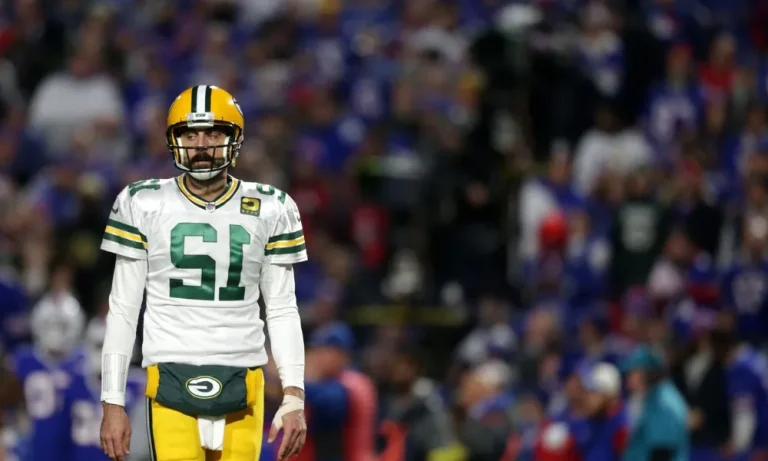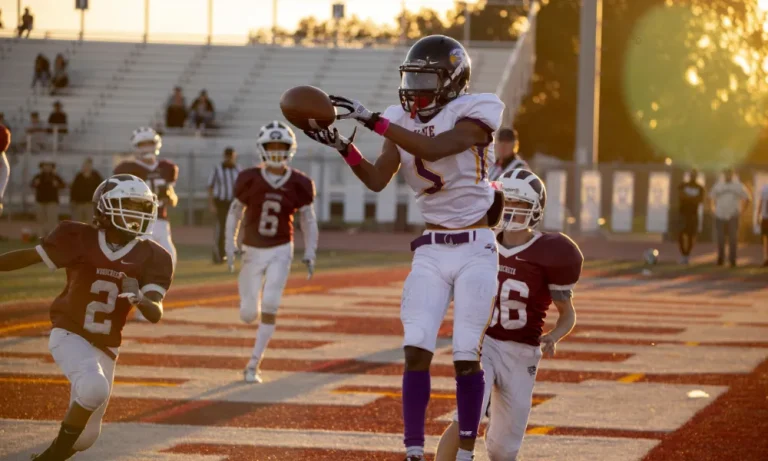What’s More Dangerous? FOOTBALL Or WRESTLING
Are you curious to know which sport poses a greater risk: football or wrestling? In this article, we’ll delve into the dangers associated with these two popular sports and explore the factors that contribute to their potential risks. Football and wrestling are renowned for their physical nature and attract athletes who thrive on competition and adrenaline. However, beneath the excitement lies the potential for serious injuries that can have lasting effects.
Our goal is to examine the risks involved in each sport and determine which one holds a higher degree of danger. So, let’s dive in and uncover the truth about what’s more dangerous: football or wrestling?
Understanding the Nature of Football and Wrestling
When it comes to understanding the nature of football and wrestling, let’s begin with football. Football is a team sport played with two opposing teams, each aiming to score points by advancing an oval-shaped ball into the opponent’s end zone.
The objective is to score touchdowns or kick field goals while defending against the opposing team’s attempts. Football involves various positions such as quarterback, running back, wide receiver, and lineman.
Techniques like throwing, catching, blocking, and tackling are fundamental to the game. However, it’s important to note that these techniques can also pose risks to players, especially during high-impact collisions and tackles.
Now, let’s turn our attention to wrestling. Wrestling is an individual combat sport that involves two competitors aiming to pin or defeat their opponent using a combination of techniques and strategies.
Different styles of wrestling exist, including folkstyle, freestyle, and Greco-Roman, each with its own set of rules and regulations. Wrestlers rely on techniques such as takedowns, holds, and escapes to gain an advantage over their opponents.
The scoring system in wrestling awards points based on takedowns, escapes, reversals, and pins. In terms of physical demands, wrestling requires strength, agility, balance, and flexibility.
However, the sport also carries risks, particularly in terms of strains, sprains, and the potential for head and neck injuries due to the high-impact nature of certain moves.
Common Injuries in Football
When it comes to the sport of football, there are several common injuries that players may face. One prevalent injury is concussions, which occur when a player experiences a forceful blow to the head. These can have immediate effects such as dizziness, confusion, and loss of consciousness, and may also lead to long-term consequences, including memory loss and cognitive impairment.
Another common injury in football is ligament tears, particularly in the knee. The anterior cruciate ligament (ACL) and medial collateral ligament (MCL) are prone to tears due to the sudden stops, starts, and changes in direction that occur during gameplay. These injuries often require surgery and extensive rehabilitation to fully recover.
Fractures are also not uncommon in football, with broken bones occurring due to the high-impact collisions and tackles involved in the sport. Fractures can range from minor hairline cracks to more severe breaks that require surgery and immobilization.
One of the most concerning long-term consequences for football players is the potential development of chronic traumatic encephalopathy (CTE). CTE is a degenerative brain disease that has been linked to repeated head traumas, such as those experienced in football.
It can lead to symptoms such as memory loss, depression, and cognitive decline. The prevalence of CTE among football players has gained widespread attention, with studies and real-life examples highlighting the serious risks associated with the sport.
Common Injuries in Wrestling
When it comes to the sport of wrestling, there are several common injuries that wrestlers may encounter. Strains and sprains are frequent occurrences in wrestling due to the physical demands placed on the body during matches. These injuries can happen to various muscles and ligaments, such as the ankle, knee, or shoulder, and may require rest, rehabilitation, and sometimes medical intervention.
Dislocations are also a concern in wrestling, particularly in joints like the shoulder or fingers. The intense grappling and twisting movements involved in the sport can lead to joints being forced out of their normal positions. Prompt medical attention is crucial to address dislocations and prevent further damage.
One of the significant risks in wrestling is head and neck injuries. High-impact moves, such as suplexes or takedowns, put wrestlers at risk of concussions, neck strains, and even spinal injuries. These injuries can have severe consequences and may require immediate medical attention and long-term rehabilitation.
Repetitive stress on the body is another concern in wrestling. The constant physical strain from training and competing can lead to long-term effects on joints, tendons, and muscles. Conditions like tendonitis or chronic pain may develop over time, requiring ongoing management and potentially impacting an athlete’s overall well-being.
Safety Measures in Football
Safety measures in football have been implemented to mitigate injury risks and ensure the well-being of players. One significant advancement is improved helmet technology. Modern helmets are designed to absorb impact, reducing the risk of head injuries and concussions. These helmets feature padding, face masks, and a secure fit to provide maximum protection.
Rule changes have also been implemented to enhance player safety. For instance, targeting rules penalize hits to the head or neck area, reducing the risk of severe injuries. Additionally, rules regarding kickoff returns have been modified to minimize high-speed collisions, further protecting players from potential harm.
Training and conditioning programs play a crucial role in reducing injury rates in football. Proper training techniques, such as strengthening exercises and agility drills, help improve players’ physical fitness and reduce the likelihood of muscle strains and tears. Conditioning programs ensure that athletes are in optimal shape and can withstand the physical demands of the sport.
The importance of proper tackling and blocking techniques cannot be overstated in preventing unnecessary harm in football. Coaches emphasize teaching players correct form and technique to minimize the risk of head and neck injuries. This includes ensuring players keep their heads up, use their shoulders, and avoid leading with their helmets during tackles or blocks.
Comparing the Overall Risk Factors
When comparing the overall risk factors between football and wrestling, it is crucial to analyze relevant data and studies to determine which sport presents a higher likelihood of severe injuries. Injury rates in both sports vary, but football generally has a higher rate due to its physical nature and the number of players involved. The high-impact collisions in football can lead to a range of injuries, including concussions, fractures, and sprains.
In terms of long-term health consequences, both sports carry risks. Football players are at a higher risk of developing chronic traumatic encephalopathy (CTE) due to repetitive head trauma. This condition can lead to cognitive decline, behavioral changes, and other neurological issues. On the other hand, wrestlers face the risk of long-term joint damage and chronic pain due to the physical strain on their bodies.
The nature of the sports also plays a role in determining the overall risk factors. Football involves more players, larger fields, and complex plays, increasing the likelihood of collisions and injuries. Wrestling, while intense and physically demanding, involves individual matches and focuses on grappling and submission techniques, which can lead to specific types of injuries such as strains, sprains, and dislocations.
FAQs
Is football more dangerous than wrestling?
Football generally poses a higher risk of severe injuries due to its physical nature, high-impact collisions, and potential for head trauma.
Are there higher injury rates in football compared to wrestling?
Yes, injury rates are typically higher in football due to the larger number of players, complex plays, and the physicality involved.
What are the long-term health consequences associated with football and wrestling?
Football players are at a higher risk of developing chronic traumatic encephalopathy (CTE), while wrestlers face risks of joint damage and chronic pain.
What types of injuries are common in football and wrestling?
Football injuries often include concussions, fractures, and sprains, while wrestling injuries may involve strains, sprains, and dislocations.
How does the nature of the sports contribute to their respective risk factors?
Football’s larger fields, more players, and high-impact collisions increase the likelihood of injuries, while wrestling’s focus on grappling and submission techniques poses specific risks such as strains and dislocations.
Conclusion
To wrap up our exploration into the dangers of football and wrestling, it becomes evident that both sports carry inherent risks. Football players face the significant threat of concussions, ligament tears, and fractures, along with the potential long-term consequences of chronic traumatic encephalopathy (CTE). On the other hand, wrestling poses risks such as strains, sprains, and head and neck injuries, which can also have lasting effects on an athlete’s health. While it is challenging to definitively determine which sport is more dangerous, it is crucial to acknowledge that safety measures have been implemented in both football and wrestling to minimize risks. Ultimately, the decision to participate in either sport should be made with careful consideration of the potential dangers and a comprehensive understanding of the safety precautions in place.





